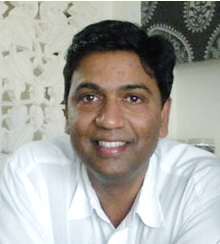Keep abreast and stay ahead… Vidyasagar, MD, SEC Industries Private Limited
Sakshi Education

- How do you view engineering education in India in the present global scenario?
A. This is a very important issue, which needs to be addressed especially at a time when the nation is looking to have 25% of the GDP coming from the manufacturing sector by 2022; if this has to materialise, engineering education in all disciplines assumes paramount importance. Yes, India has enhanced capacities reasonably well in the recent past, more particularly at the UG level and to some extent at the PG level. But it is at the PhD level, I think that we need to do a lot more. We need to have larger perspective in terms of getting more and more PhDs by bringing out a national policy which will attract the private sector as a partner. The number of PhDs that India now produces is abysmally low on the global scale. This does not behove a country which prides itself on its youth and knowledge.
Coming to the basic level engineering the technical education /skills, we have to rebuild our ITIs and Polytechnics by upgrading the standards both of faculty and facility to match the contemporary technologies in the industry. Of course some initiatives are underway at the national level but these need further focus.
We as a nation need to do a lot, especially the private sector and more particularly the manufacturing sector must contribute its bit, as part of CRS in building knowledge India, from creating additional chapters/chairs/centres at IITs to building more and more IITs in the private sector. The Govt. of India also must come out with an appropriate encouraging policy.
There are about 3600 engineering colleges in India and 55% + of them (about 2000 colleges) are in just four states, namely Maharashtra, Tamil Nadu, Karnataka and Andhra Pradesh. Bigger states like Uttar Pradesh, Madhya Pradesh and Bihar have relatively less number of colleges. There is an immediate need to address the issue of balancing the availability of education more particularly in engineering education.
- Could you please name some of the important factors of engineering excellence?
A. The following factors play a significant role in achieving excellence in engineering education
a. Institute Infrastructure and faculty
b. Interaction with industry and Research institutions
c. Course availability
d. Course repeating
e. Inaccurate or unhelpful advising
f. Problems associated with isolation
g. Communicating orally
h. Communicating in writing
i. Critically analysing information and arguments
j. Analysing and interpreting data
k. Conducting experiments
l. Learning from books, research documents
m. Locating technical literature
n. Financial and personal issues - Despite the growth in the number of engineering colleges, IITs, IIITs and NITs, quality of engineering education does not seem to graduate to global standards. What is your take on this issue?
A. This is primarily because we in India focus onthe numbers game without building quality alongside; budget allocation is not commensurate. We need to upgrade the infrastructure in the respective areas as required: labs, libraries, faculty, incubation centres etc. Also need to make institutions as production centres by properly linking with public and private industry at a suitable level and relevant areas. There must be a system like in medical education where having a hospital in place is a pre-requisite for licensing medical colleges.
Engineering colleges, IITs, IIITs and NITs must enter into MoUs with appropriate industries for the students to take up live projects.
- According to a NASSCOM survey, only 25% of engineering graduates are employable. How can we address the problem of low employability levels?
A. May be in IT and IT enabled sector the employability level is up to 25%. But in the core engineering sector, in a true sense the employability levels may be half of it as everyonefocusses on the IT sector and most of the engineering colleges do not focus on core engineering sectors and primarily most of the colleges do not have the prerequisite facilities in the collage labs/work-shops.
One of the major reasons in this regard is the vast difference in the salary structure between the IT sector and manufacturing sector, wherein everyone looks only for IT profession and no one feels the necessity of looking at newer technology practices. For this to change, we need to build infrastructure and industry should adopt engineering colleges and a policy frame work is required from GoI.
- Despite a lot of talk about academia-industry interaction, still we don’t seem make notable progress on this front. As an industrialist, how do you put this problem in perspective?
A. Here the egg and chicken story will be the right simile. Should industry take more initiative or the institutes? Quite often academia thinks that industry is not responding and industry feels that spending time is not yielding results in the existing system when there is no institutional social responsibility (ISR) in the university system.
There are some initiatives underway, both from the corporate side andacademia as well, but all of them are at infant stage even at the IITs. Only a policy framework with statutory norms can help in improving industry-academia interaction. A productive business model must bein place, wherein both faculty and organizations benefit financially and also benefit students largely in terms of knowledge and marginally monetarily.
- Should industries be more and patient to work with colleges and universities? Could please tell us your personal experience in this regard?
A. Yes, industry must have more patience as a socially responsible corporate by understanding the present education system and the resources the institute have. Not to name my personal experience in creating something like this took almost 7 years plus, please note only to initiate and create the cell. I hope this will take it forward for mutual benefit, largely for the benefit of our country. - How to bridge the gap between the industry and academia, do you suggest any modalities or curriculum innovations to address this problem?
A.Below are some of the points to be considered in this regard.
i) Must place a system like in medical collages: at least the institute must have MOUs with respective industries as per the engineering disciplines they teach.
ii) Institutes must have an institute–industry coordination cell
iii) Members from industry must be involved in preparing the syllabus and curriculum.
iv) Faculty must be provided industry exposure programmesperiodically.
v) Students must take up more live projects with revenue generation model.
vi) Faculty must be encouraged to undertake more and more research papers and students must be made part of it. - In critical areas such as defence and aerospace, small countries like Sweden and Israel are far ahead than us. How India can grow in these areas and emerge as a global leader?
A. Historically, yes, most of the European countries are much ahead of India in terms of defence and aerospace technologies; they spend more on these areas and their economies are dependent on it to a large extent. Subsequently, the USA and countries like Israel entered the fray and now China and Korea as well.
Technology development in this segment is complex and India being an agrarian and peace-seeking country, we have not focused on niche technologies required for the defence and aerospace areas which need a supportive environment and resources. And India also had a lot of challenges post-independence, where we had to address the basic needs of people and the core infrastructure. But we achieved self-reliance in geo-space programs where ISRO has a global reputation; we did similarly well in the field of missile technologies by launching AGNI-V. However, we still need to do a lot in defence &armament technologies, aircraft technologies and more particularly in civilian aerospace, a beginning is long overdue.
Apart from this a lot of other political and bureaucratic processes play a part in this regard. Our system is often influenced by foreign lobbying which results in our spending enormous sums on imports and depriving the development of Indian defence & aerospace industry which otherwise has a strong presence in sectors like auto, steel, telecom, IT, etc. We should applaud the latest decision of the Defence Acquisition Council (DAC), the apex decision-making body of the Ministry of Defence (MoD), to revise the Defence Procurement Procedure (DPP) that details the process for buying defence equipment for the military. MoD today announced that the new policy, DPP-2013, has the twin objectives of “infusing greater efficiency in the procurement process and strengthening the defence manufacturing base in the country”.
As per this change DPP-2013 goes beyond the earlier DPPs of 2002, 2005, 2006, 2008 and 2011 in explicitly backing indigenous defence industry. It stipulates that Indian defence companies will get access to the military’s long-term equipment road map, providing them with the time needed for developing the equipment that the military needs in the future; provides a level playing field between the defence public sector undertakings (DPSUs) and the private defence companies; simplifies the ‘buy & make (Indian)’ procedure to benefit Indian industry; and defines ambiguous terms in the DPP like ‘indigenous content’.
Apart from PSUs, the major contribution to indigenous defence and aerospace development and production was made by Indian SMEs. In order to strengthen this very important sector, MoD also cleared a keenly anticipated mechanism for providing micro, small and medium scale enterprises (MSMEs) with funds for developing defence equipment. According to MoD, “SIDBI has decided to earmark an amount of Rs 500 crore for providing loans (to defence MSMEs), and further, a fund of Rs 50 crore for equity support out of ‘India Opportunities Fund’ managed by its subsidiary, namely, SIDBI Venture Capital Ltd.” DPP-2013 goes a long way towards addressing longstanding demands of the Indian defence industry, particularly the private sector.
These initiatives will, I am sure, address this issue provided there is consistency and commitment from the Indian political and administration systems. - How do you see the future of indigenous defence industry in coming 10 years?
A. I envisage a major breakthrough in this sector with the GoI’s initiatives and the interest of global industry in this segment largely looking at India to invest after the lessons learnt from China in the last decade.
As a result of the initiative by the Aerospace Industry of Hyderabad , we have the first aerospace park with SEZ up and running in Hyderabad, with a couple of TATA aerospace companies already into production. And similar things are happening in Karnataka, Tamil Nadu, Maharashtra, Delhi etc.
More such positive developments will materialise in this sector and the rapidity of such developments will depend heavily on a proactive and inclusive approach by GoI, PSUs, DRDO and the private sector. This will further the cause of development of niche technologies and high-end manufacturing output. This will certainly count in achieving the dream of 25% manufacturing share in GDP and 100 million jobs by 2022. - Can budding engineers aspire become entrepreneurs in defence and aerospace industries in years to come?
A. Yes there will be a lot of scope for new entrepreneurs and there is a need for more investments. When more investments are required, budding entrepreneurs will find huge opportunities. - For many budding engineers, there is no world beyond IT. Do you think core engineering sectors have much more to offer?
A.There are always opportunities for new entrepreneurs in the core engineering sectors. New opportunities, identified need/gap in this area and the positive change in policies offer a lot to budding entrepreneurs. As we get more global, more opportunities will constantly open up.
With the changing dynamics in the IT sector and the shift in mindset of younger generation to be self made, core engineering expertise holds boundless avenues. -
What kind of aptitude and skills engineering students should have to become champions in core engineering?
A.Primarily it is the system, not the student alone in moulding/preparing/motivating engineering student’s mastery in core engineering. If I were to say traditionally, one should have passion, commitment, dedication, hard work, knowledge, finance and so on.
If there is no conducive environment prevailing what is one to do? If there is a promising opportunity and system support, champions will automatically emerge and they can be resourced by the aspiring entrepreneurs. Please remember that entrepreneurship runs strong in the Indian psyche, we just have to facilitate and create enabling infrastructure. - In India, education institutions are encouraging students to think out of the box and establish themselves as entrepreneurs. Where the problem and what is your solution?
A.The system must define what out-of-the-box thinking based on the legacy, platforms and opportunities that we in India have and what we can do in India and globally.
Presently, thinking out of the box is focused on the IT sector and easy earnings and are mostly un-productive. We need to properly channelize the spirit, talent and the knowledge of young India into productive sectors like knowledge based industry, manufacturing, mechanized agricultural processes, infrastructure, food processing etc apart from IT, financial, media etc. - Many students from India go for foreign education and settle down abroad at times. Is it good for India?
A.In a real sense no, but when we could not provide the opportunity, we have no right to hold them when we are in a globalised economy. If any case, those who went and settled abroad have been contributing back to the nation in one way or the. It is public knowledge that there is a huge add to Indian revenues from health care and IT professionals which has a major impact on the economy as well.
As someone said “Brain drain is better than brain in drain!” - Finally, your advice for the aspiring engineers
A.The upwardly moving socio-economic conditions in India and the changing world order will throw open limitless possibilities and opportunities in the years to come, both for those of you who will thrive on the opportunities that come your way and more potently for those of you who will CREATE OPPORTUNITIES; Fear not for your future but in order to empower yourselves to meet/create those openings, I have a simple prescription - keep abreast and stay ahead: keep abreast of the developments & happenings constantly and stay ahead of the competition, be it at study or at work.
Published date : 20 Oct 2021 04:08PM








